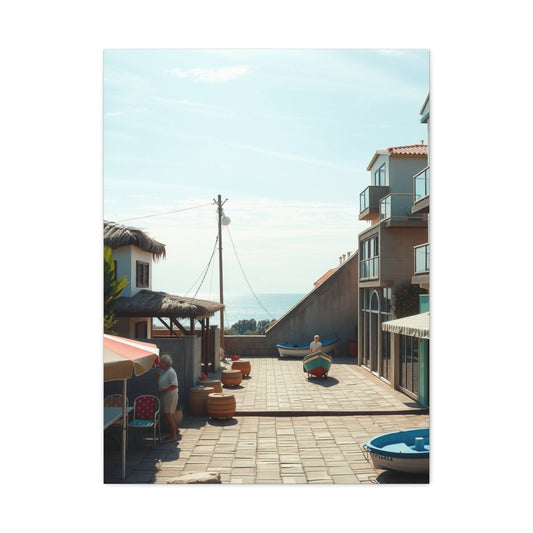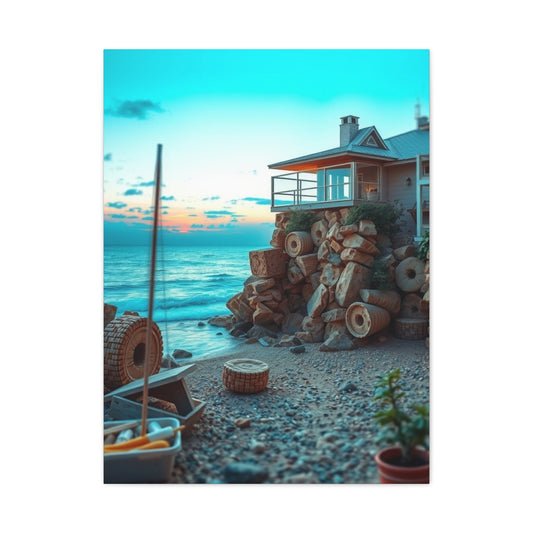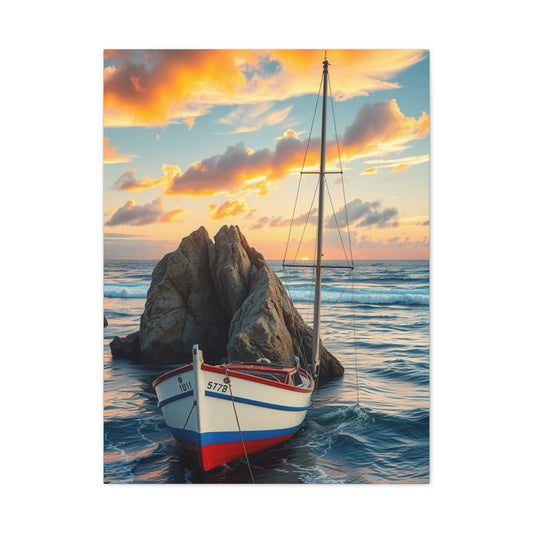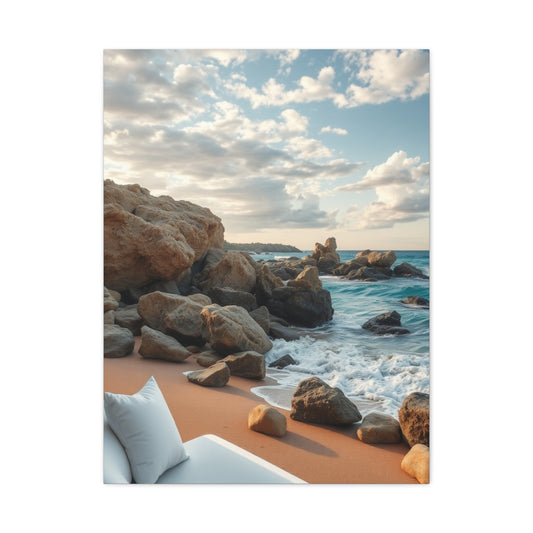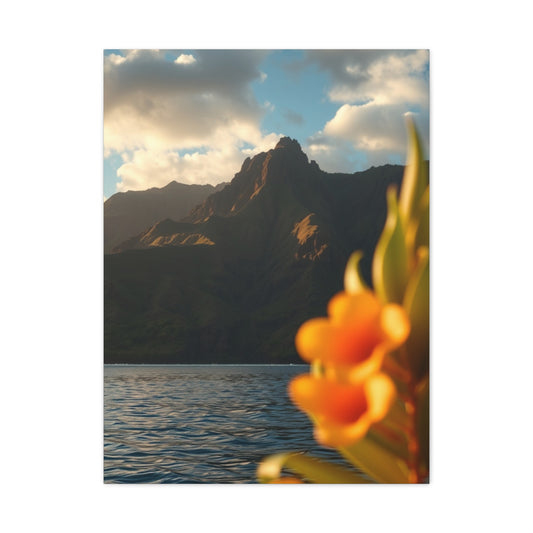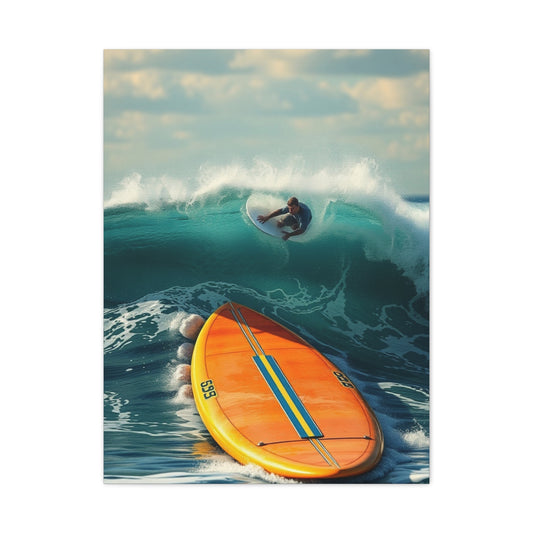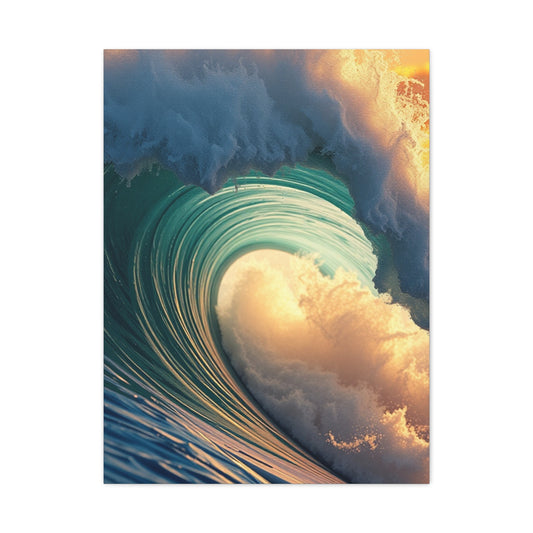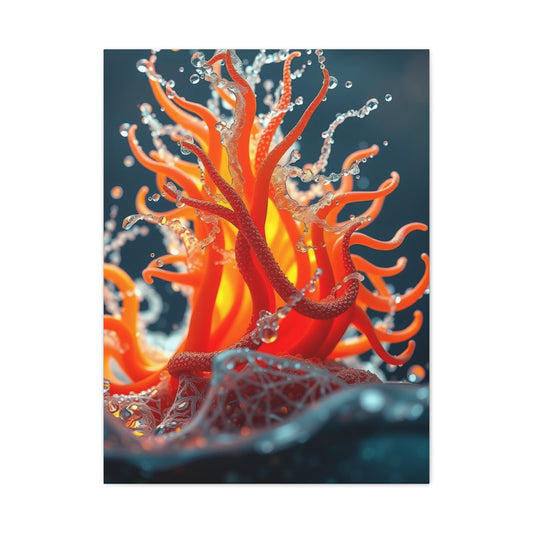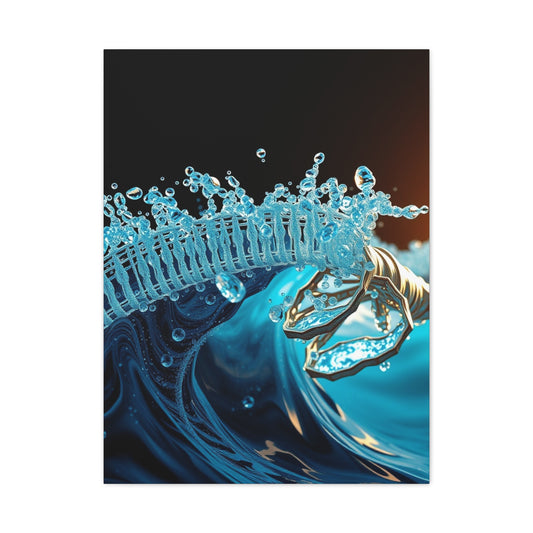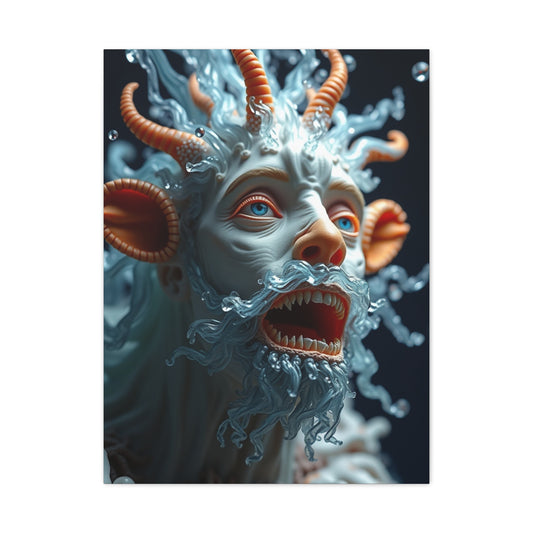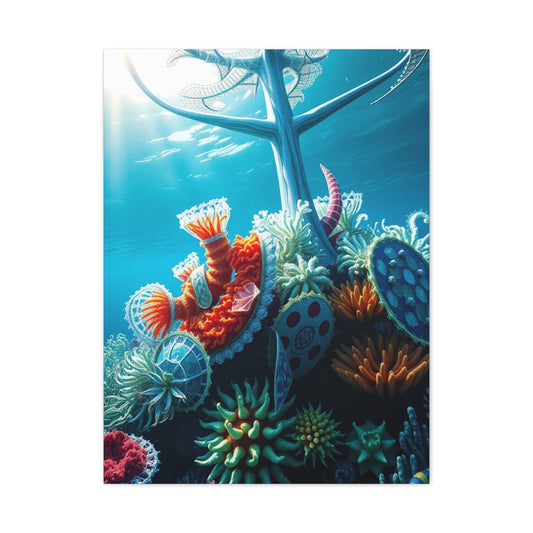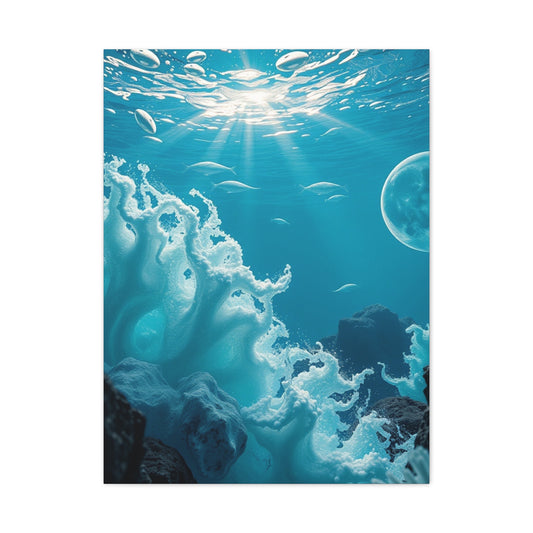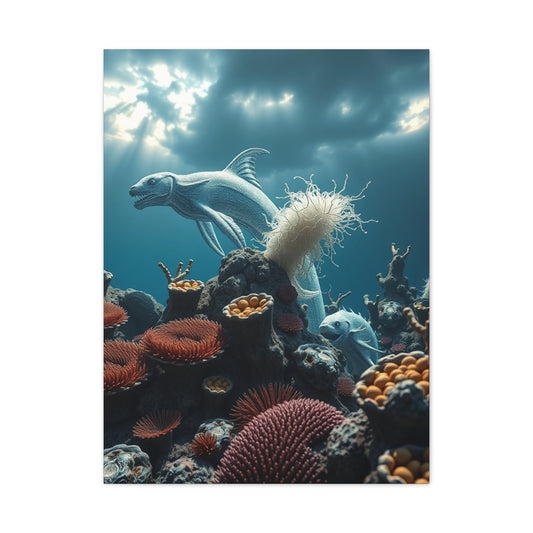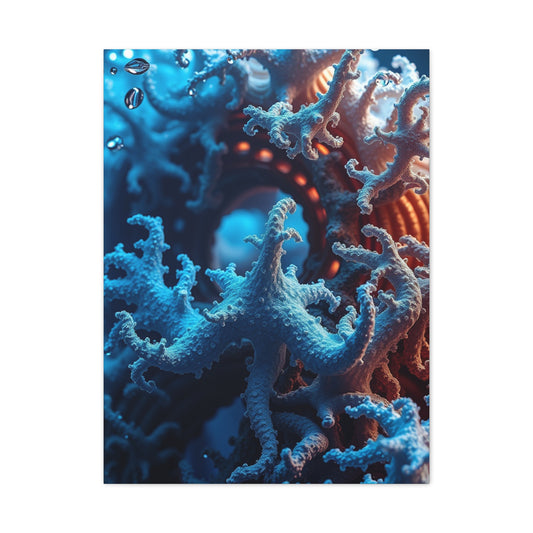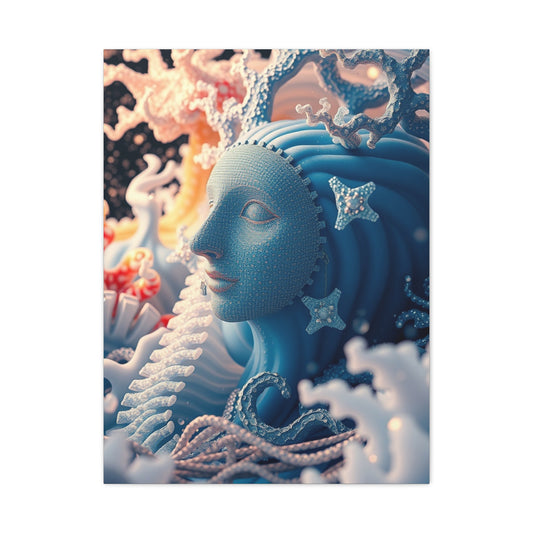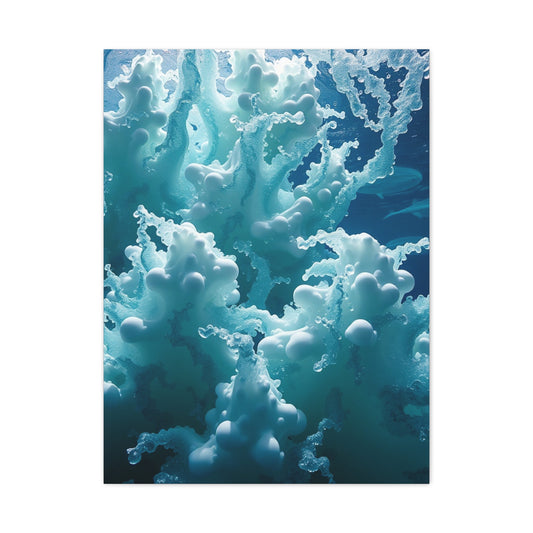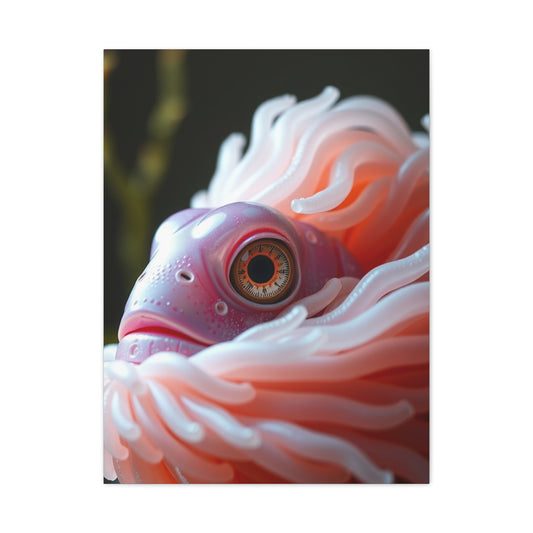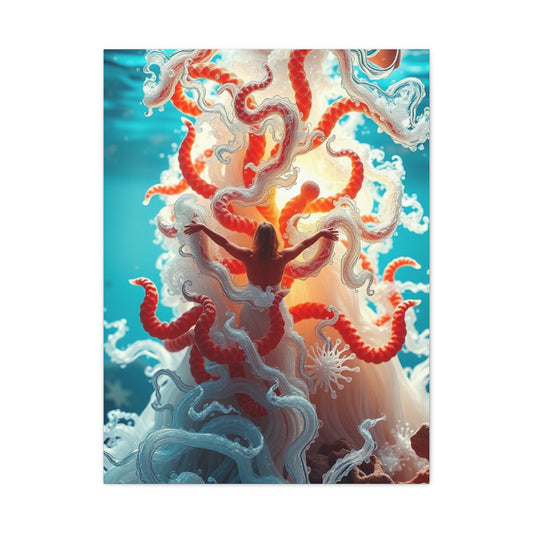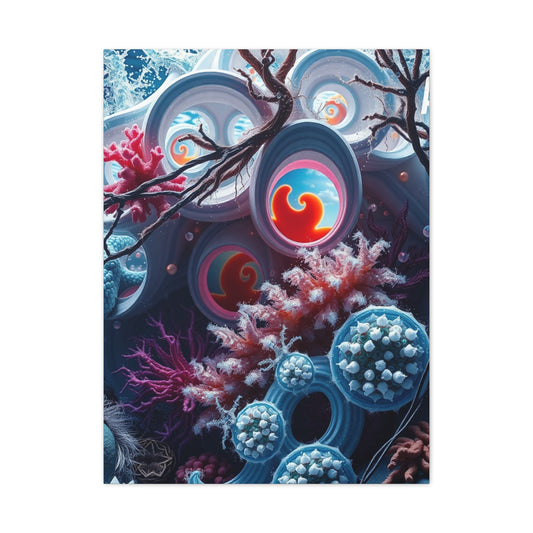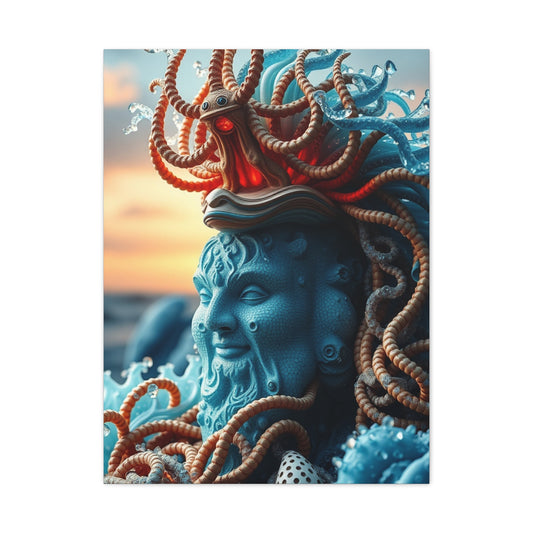Maritime Abstract Wall Art: Transforming Spaces with Oceanic Elegance
Maritime abstract wall art represents a sophisticated evolution in the way coastal themes are expressed within modern interiors. Unlike traditional seascapes that rely on direct visual representation, this artistic movement distils the very essence of the ocean into color, texture, and form. The result is a collection of works that embody the fluidity, mystery, and emotional depth of the sea while leaving space for personal interpretation. These pieces bring an elevated sense of serenity and refinement to living spaces, allowing homeowners to experience the ocean’s vast beauty in a uniquely contemporary way.
At its core, maritime abstract art is about more than simply portraying water. It captures the feeling of standing before a horizon, the sensation of salt-laden breezes, and the meditative rhythm of waves. Through sweeping brushstrokes, layered textures, and shifting tones of blues, greens, and silvers, artists translate the sensory and emotional experience of coastal encounters into visual language. This allows viewers to connect with the spirit of the ocean on a deeper level, one that transcends literal imagery.
The Origins of Maritime Abstract Expression
The rise of maritime abstract art is rooted in a desire to move beyond conventional depictions of the sea. While classical seascapes celebrated realism, detail, and naturalistic portrayal, abstract interpretations sought to unlock something more elusive: the emotions tied to ocean experiences. Artists began experimenting with non-representational techniques to evoke the essence of maritime life—its unpredictability, serenity, and power—rather than focusing solely on visual likeness.
For example, bold strokes of deep indigo might convey the intensity of a storm at sea, while gentle gradations of aqua and white can suggest the calm stillness of an early morning tide. These interpretations offer limitless possibilities for engagement, as each viewer brings their own memories, emotions, and associations to the work.
Emotional Resonance of Ocean-Inspired Abstractions
Maritime abstract artwork resonates strongly because the ocean itself holds profound symbolic meaning. For many, it represents freedom, exploration, and renewal. For others, it embodies mystery, vastness, and the unknown. Abstract art, by nature, allows for these varied interpretations to coexist within the same piece.
Unlike literal depictions—such as paintings of boats, harbors, or lighthouses—abstract maritime works leave space for imagination. A swirl of cerulean and cobalt might remind one viewer of snorkeling in tropical waters, while another may see the restless motion of waves against rugged cliffs. This openness invites deeper personal engagement, turning the artwork into an evolving emotional experience rather than a static visual.
Why Homeowners Are Choosing Maritime Abstracts
Modern homeowners increasingly gravitate toward maritime abstract art because it aligns with contemporary design aesthetics while still delivering the calming, restorative influence of ocean themes. Minimalist interiors, for example, benefit from the subtle sophistication of abstract pieces that complement clean lines and neutral tones. Meanwhile, eclectic or coastal-inspired homes find balance in the interplay of color and fluid form.
What makes these pieces especially appealing is their versatility. A large canvas of layered blue gradients can serve as the dramatic focal point of a living room, while smaller framed works can be grouped together to create a gallery wall evoking different moods of the sea. Their non-representational nature also ensures they integrate seamlessly into various décor styles—from Scandinavian simplicity to bohemian warmth to luxury modernism.
Transformative Impact on Interior Spaces
Maritime abstract wall art not only beautifies a room but also changes its atmosphere. These pieces introduce a sense of calm and expansiveness, echoing the restorative qualities of the ocean itself. Soft, flowing compositions promote relaxation in bedrooms and reading nooks, while bolder, textured works energize offices and creative studios.
Strategic placement enhances their impact. A panoramic abstract above the sofa creates a grounding focal point, while vertically oriented pieces can elongate a smaller wall, mimicking the feeling of endless horizons. Combined with natural light, coastal tones, and organic materials like wood and linen, these works transform interiors into serene, ocean-inspired sanctuaries.
Human fascination with oceanic imagery extends far beyond mere aesthetic appreciation, rooting itself in fundamental psychological and evolutionary connections. Scientific research demonstrates that exposure to blue-toned environments activates parasympathetic nervous system responses, naturally reducing cortisol levels and promoting physiological relaxation. Maritime abstract art harnesses these inherent biological reactions while adding layers of visual complexity that engage cognitive processing.
The concept of biophilia, introduced by biologist Edward Wilson, explains humanity's innate affinity for natural environments and living systems. Oceanic abstract artwork satisfies this biological drive by bringing elements of the natural aquatic world indoors, creating psychological bridges between urban living spaces and primal environmental connections. These artistic interpretations allow individuals to maintain contact with natural rhythms and cycles, even within highly urbanized settings.
Color psychology research reveals that aquatic hues ranging from cerulean to turquoise activate brain regions associated with tranquility, creativity, and emotional balance. Maritime abstract pieces leverage these neurological responses while introducing additional visual elements that prevent monotony and maintain viewer engagement. The strategic use of contrasting tones, textural variations, and compositional dynamics creates visual experiences that are simultaneously soothing and stimulating.
Furthermore, abstract oceanic art provides viewers with opportunities for meditative contemplation and stress relief. The non-literal nature of abstract expression encourages prolonged observation and personal interpretation, fostering mindfulness practices that contribute to overall mental wellness. This therapeutic dimension explains why healthcare facilities, wellness centers, and residential spaces increasingly incorporate maritime abstract pieces into their environmental design strategies.
Distinctive Visual Elements in Maritime Abstract Composition
Maritime abstract artwork distinguishes itself through carefully orchestrated visual components that work synergistically to create cohesive oceanic impressions. Color palettes form the foundation of these artistic expressions, typically featuring sophisticated gradations of aquatic blues ranging from deep indigo to pale cyan. Artists skillfully incorporate complementary earth tones including sandy ochres, driftwood grays, and pearl whites to establish visual balance and suggest coastal environments.
Textural elements play crucial roles in maritime abstract compositions, with artists employing various techniques to simulate water movement, foam patterns, and surface reflections. Impasto applications create raised surfaces that catch and reflect light similarly to ocean waves, while glazing methods produce translucent layers that suggest water depth and clarity. Mixed-media approaches may incorporate actual sand, crushed shells, or metallic particles to enhance tactile qualities and visual authenticity.
Compositional flow represents another essential element in maritime abstract art, with artists utilizing directional brushstrokes, graduated color transitions, and rhythmic patterns to suggest oceanic movement and energy. Horizontal compositions often evoke horizon lines and expansive seascapes, while vertical formats may suggest waterfalls, coastal cliffs, or dramatic wave formations. Circular or spiral patterns can represent whirlpools, tidal movements, or the cyclical nature of oceanic systems.
Lighting effects within maritime abstract pieces often replicate the complex interplay between sunlight and water surfaces. Artists achieve these effects through strategic placement of metallic accents, iridescent pigments, or glossy finish applications that create shimmer and reflection similar to natural oceanic environments. These lighting simulations add dynamic qualities to static artworks, causing visual experiences to change based on viewing angles and ambient lighting conditions.
Scale considerations significantly impact the effectiveness of maritime abstract compositions. Large-format pieces create immersive experiences that can transform entire room atmospheres, while smaller works offer intimate contemplative opportunities. Multi-panel installations allow for complex narrative development and can accommodate various wall configurations while maintaining thematic coherence.
Diverse Stylistic Approaches in Maritime Abstract Art
Maritime abstract art encompasses numerous stylistic approaches, each offering unique interpretative possibilities and aesthetic experiences. Gestural abstraction emphasizes spontaneous brushwork and emotional expression, creating maritime pieces that capture the raw energy and unpredictability of oceanic environments. These works often feature bold brushstrokes, dramatic color contrasts, and dynamic compositions that convey the power and movement inherent in marine settings.
Color field abstraction takes a more contemplative approach, utilizing large areas of pure color to create atmospheric impressions of oceanic environments. These pieces typically feature subtle color transitions and minimalist compositions that emphasize the meditative qualities of water and sky interactions. The simplified visual language of color field maritime art makes it particularly suitable for contemporary interior design schemes that prioritize clean lines and uncluttered aesthetics.
Geometric abstraction applies structured compositional elements to maritime themes, creating artworks that suggest oceanic patterns through mathematical precision and systematic color relationships. These pieces might feature wave-like patterns rendered through geometric shapes, or color progressions that mimic tidal movements through systematic arrangements. Geometric maritime abstractions appeal to viewers who appreciate both natural beauty and intellectual rigor in artistic expression.
Mixed-media maritime abstractions incorporate various materials and techniques to create rich textural experiences that simulate oceanic environments. Artists may combine traditional painting methods with collage elements, found objects from coastal environments, or industrial materials that reference human interactions with marine ecosystems. These works often blur boundaries between painting and sculpture, creating three-dimensional experiences that engage multiple senses.
Digital maritime abstractions represent emerging possibilities within this artistic category, utilizing computer-generated imagery, digital manipulation techniques, or hybrid analog-digital approaches to create oceanic interpretations. These works may incorporate photographic elements, algorithmic generation processes, or interactive components that respond to environmental conditions or viewer presence.
Strategic Placement Considerations for Maritime Abstract Art
Successful integration of maritime abstract art into residential or commercial spaces requires careful consideration of environmental factors, viewing distances, lighting conditions, and architectural contexts. Living areas typically benefit from large-scale maritime abstractions that can serve as focal points while complementing existing furnishing and color schemes. The expansive nature of oceanic themes works particularly well in open-plan spaces where the artwork can be appreciated from multiple vantage points.
Bedroom environments call for more subdued maritime abstractions that promote relaxation and peaceful sleep. Cooler color palettes dominated by blues and greens create calming atmospheres, while softer brushwork and gentle compositional flows avoid overstimulation. Smaller-scale pieces or multi-panel installations work well in bedroom settings, allowing for intimate engagement without overwhelming the space's primary function.
Kitchen and dining areas can accommodate more energetic maritime abstractions that stimulate conversation and social interaction. Warmer color palettes incorporating coral tones, golden yellows, or sunset oranges can complement food presentation while maintaining oceanic themes. The moisture resistance of certain maritime abstract mediums, particularly acrylics and resins, makes them practical choices for kitchen environments.
Bathroom spaces naturally complement maritime abstract themes, with the inherent water connections creating logical thematic relationships. Smaller-scale pieces work well in bathrooms, where viewing distances are typically intimate and the artwork can contribute to spa-like atmospheres. Moisture-resistant materials and protective framing become essential considerations in bathroom installations.
Home office environments benefit from maritime abstractions that provide mental refreshment and creative inspiration during work periods. The contemplative qualities of oceanic abstract art can serve as visual breaks from screen-based activities while maintaining professional aesthetics suitable for video calls and client meetings. Medium-scale pieces positioned within peripheral vision ranges can provide stress relief without causing distraction from work tasks.
Color Harmony and Palette Development in Maritime Abstractions
Color selection forms the cornerstone of effective maritime abstract compositions, requiring sophisticated understanding of color relationships, psychological impacts, and environmental compatibility. Primary oceanic blues serve as foundation colors, with artists developing complex variations through temperature shifts, saturation adjustments, and value modifications. Cool blues suggest deep ocean depths and Arctic waters, while warmer blue variations evoke tropical lagoons and Mediterranean coastlines.
Complementary color relationships enhance maritime abstract compositions by creating visual tension and dynamic interest. Orange and coral tones provide warm contrasts to cool oceanic blues, suggesting sunrise or sunset lighting conditions over water. These warm accents can be introduced through subtle glazes, gestural highlights, or concentrated focal areas that draw viewer attention while maintaining overall color harmony.
Analogous color schemes utilize adjacent hues on the color wheel to create harmonious maritime abstractions with subtle variation and sophisticated unity. Blue-green combinations suggest shallow coastal waters and marine plant life, while blue-violet palettes evoke twilight oceanic scenes and mysterious underwater environments. These color relationships provide visual cohesion while allowing for rich tonal development within narrow spectral ranges.
Monochromatic approaches explore single hue families through various saturations, values, and temperatures, creating maritime abstractions with subtle sophistication and elegant simplicity. Blue monochromatic schemes can range from pale ice blues to deep navy tones, suggesting various oceanic conditions and lighting situations. These limited palette approaches work particularly well in contemporary interior design contexts that emphasize restraint and refinement.
Neutral integration plays crucial roles in maritime abstract color development, with earth tones, grays, and whites providing visual rest areas and compositional balance. Sandy beiges suggest coastal beaches and shoreline interactions, while various gray tones can evoke storm clouds, rocky coastlines, or weathered driftwood. Strategic neutral placement prevents color overwhelm while maintaining oceanic thematic integrity.
Textural and Material Considerations
Textural development in maritime abstract art requires sophisticated manipulation of painting materials and application techniques to simulate oceanic surface qualities and environmental characteristics. Impasto techniques create raised paint surfaces that catch and reflect light similarly to water waves, with artists using palette knives, brushes, or unconventional tools to achieve desired textural effects. These three-dimensional surface qualities add tactile dimensions to visual experiences while creating dynamic lighting interactions.
Glazing methods produce translucent color layers that suggest water depth and clarity while maintaining luminous surface qualities. Multiple glaze applications can create complex color relationships and atmospheric effects that replicate the optical qualities of natural oceanic environments. Artists must carefully balance glaze opacity and color intensity to maintain both depth illusion and surface vitality.
Scumbling techniques involve dry brush applications over underlying paint layers, creating broken color effects that suggest foam patterns, surface reflections, or atmospheric conditions. These applications require careful brush selection and paint consistency control to achieve convincing oceanic surface simulations while maintaining overall compositional unity.
Mixed-media approaches incorporate various materials beyond traditional painting mediums to enhance textural authenticity and visual interest. Sand additions create actual granular textures reminiscent of beaches and underwater sediments, while crushed shells or glass particles can simulate natural coastal debris. Metallic inclusions create reflective elements that mimic sunlight interactions with water surfaces.
Resin applications provide high-gloss surface qualities that replicate water's reflective properties while protecting underlying artwork from environmental damage. Epoxy resins can be tinted with transparent pigments to create colored depth effects, while clear applications maintain color purity while adding surface dimension. Resin techniques require specialized knowledge and safety procedures but produce unique visual effects difficult to achieve through traditional methods.
Artistic Innovations
Contemporary maritime abstract art continues evolving through innovative approaches, material explorations, and conceptual developments that expand traditional oceanic representation boundaries. Environmental consciousness increasingly influences maritime abstract artists, who incorporate recycled materials, sustainable practices, and ecological awareness into their creative processes. These approaches reflect growing societal concerns about ocean health and environmental protection while maintaining aesthetic excellence.
Digital integration represents significant contemporary developments in maritime abstract art, with artists utilizing computer-generated imagery, digital manipulation techniques, and hybrid analog-digital processes. Augmented reality applications allow viewers to interact with maritime abstractions through mobile devices, adding dynamic elements and educational content to static artworks. These innovations expand engagement possibilities while appealing to younger demographics comfortable with digital interfaces.
Performance-based maritime abstractions incorporate time elements and process documentation into artistic presentations, with artists creating oceanic abstractions during live events or through documented studio processes. These approaches emphasize the creative journey while demonstrating technical mastery and artistic decision-making processes. Video documentation allows broader audiences to engage with artistic creation while appreciating final artworks within developmental contexts.
Installation-based maritime abstractions expand beyond traditional wall-mounted presentations to create immersive environmental experiences. Large-scale installations may incorporate multiple panels, three-dimensional elements, lighting systems, or sound components to create comprehensive oceanic environments within gallery or residential spaces. These ambitious projects require extensive planning and coordination but produce memorable experiences that transcend conventional artwork categories.
Collaborative approaches bring together multiple artists, scientists, or community members to create maritime abstractions that reflect diverse perspectives and expertise. These projects may combine artistic vision with scientific accuracy, cultural insights, or community involvement to produce works with enhanced meaning and broader appeal. Collaborative processes often generate innovative solutions and unexpected creative directions.
Commissioning Custom Maritime Abstract Artworks
Custom commissioning allows collectors to obtain maritime abstract artworks specifically designed for particular spaces, color preferences, and personal aesthetic requirements. This process typically begins with initial consultations where artists assess spatial requirements, environmental conditions, and client preferences to develop appropriate conceptual approaches. Successful commissioning requires clear communication and mutual understanding between artists and clients.
Size specifications must account for wall dimensions, ceiling heights, viewing distances, and surrounding architectural elements. Artists typically provide scaled drawings or digital mockups to help clients visualize proposed artworks within intended spaces. Adjustments to composition, color emphasis, or textural elements can be discussed and refined before final execution begins.
Color coordination with existing interior design elements requires careful planning and possibly physical paint samples or color swatches. Artists may request photographs of intended installation spaces, fabric samples, or paint chips to ensure optimal color harmony. Some artists provide small color studies or preliminary sketches to confirm palette directions before proceeding with full-scale execution.
Timeline considerations include conceptual development periods, execution timeframes, drying or curing requirements, and installation scheduling. Complex maritime abstractions may require several weeks or months for completion, particularly if special materials or techniques are involved. Clients should plan accordingly and communicate any deadline requirements during initial discussions.
Pricing structures for commissioned maritime abstractions typically reflect artwork dimensions, material costs, complexity levels, and artist experience. Payment schedules often require deposits upon commission acceptance, progress payments during execution, and final payments upon completion. Clear contracts should outline expectations, revision policies, and delivery arrangements to prevent misunderstandings.
Maritime Abstract Artworks
Proper maintenance ensures maritime abstract artworks retain their visual impact and investment value throughout extended ownership periods. Environmental control represents the most critical preservation factor, with temperature and humidity fluctuations potentially causing paint layers to expand, contract, or separate from substrates. Ideal conditions maintain temperatures between 65-70 degrees Fahrenheit with relative humidity levels between 45-55 percent.
Light exposure management prevents fading and degradation of pigments and substrates over time. Ultraviolet radiation poses particular threats to organic materials and certain synthetic pigments commonly used in maritime abstractions. UV-filtering glazing, window treatments, or strategic placement away from direct sunlight exposure help minimize photochemical damage while maintaining artwork visibility.
Dust accumulation can obscure surface details and cause abrasive damage during cleaning attempts. Regular gentle dusting with soft, dry brushes or microfiber cloths removes surface contaminants without disturbing paint layers. Avoid feather dusters, which can scratch delicate surfaces, and never use household cleaning products or moisture on artwork surfaces.
Professional conservation assessment should be conducted periodically to identify potential problems before they become serious damage. Qualified conservators can evaluate structural integrity, identify material degradation, and recommend appropriate treatment protocols. Early intervention often prevents costly restoration procedures while maintaining artwork authenticity and value.
Framing considerations significantly impact artwork preservation, particularly for works on paper or canvas. Acid-free mounting materials, conservation-grade glazing, and proper ventilation prevent chemical interactions that could damage artwork over time. Professional framing using museum-quality materials represents worthwhile investments for valuable maritime abstractions.
Interior Design Integration Strategies
Successful integration of maritime abstract artworks into interior design schemes requires careful consideration of spatial relationships, color coordination, lighting design, and stylistic compatibility. Scale relationships between artworks and surrounding architectural elements significantly impact visual effectiveness, with large-scale pieces requiring adequate wall space and viewing distances for proper appreciation.
Color coordination extends beyond simple color matching to include consideration of undertones, saturation levels, and temperature relationships. Maritime abstractions with cool blue dominance may require warm accent colors in furnishings or accessories to create balanced environments. Conversely, warmer maritime palettes might benefit from cool neutral backgrounds to prevent color oversaturation.
Lighting design plays crucial roles in maritime abstract artwork presentation, with proper illumination enhancing color accuracy, textural details, and overall visual impact. Track lighting systems allow for adjustable positioning and intensity control, while picture lights provide dedicated illumination for individual pieces. LED systems offer energy efficiency and reduced heat generation compared to traditional halogen alternatives.
Stylistic compatibility ensures maritime abstractions complement rather than conflict with existing interior design themes. Contemporary minimalist environments typically accommodate clean-lined maritime abstractions with simplified color palettes, while traditional settings may benefit from more complex compositions with classical proportions and harmonious color relationships.
Furniture placement should consider artwork viewing angles and create comfortable observation positions without blocking circulation paths. Seating arrangements that allow relaxed artwork contemplation enhance enjoyment while supporting the meditative qualities associated with maritime abstract art. Coffee tables, side tables, or other furniture pieces should not compete with or obstruct artwork appreciation.
Regional Variations and Cultural Influences
Maritime abstract art reflects regional coastal characteristics and cultural relationships with oceanic environments, creating distinct stylistic variations that celebrate local maritime heritage while participating in global artistic conversations. Mediterranean-influenced maritime abstractions often feature warmer color palettes and intense lighting effects that reflect the region's intense sunlight and azure waters. These works typically emphasize clarity and luminosity while incorporating earth tones that suggest ancient coastal settlements.
Nordic maritime abstractions frequently explore cooler color ranges and dramatic lighting contrasts that reflect Arctic and sub-Arctic oceanic conditions. These works may incorporate silver and gray tones that suggest ice formations, with compositions that emphasize the raw power and sometimes threatening nature of northern seas. The psychological impact of long winter nights and brief intense summers often influences the emotional content of Nordic maritime abstractions.
Tropical maritime abstractions celebrate vibrant coral reef ecosystems and warm ocean conditions through brilliant color palettes and complex textural relationships. These works often incorporate multiple blues, greens, and warm accent colors that suggest abundant marine life and crystal-clear waters. Compositional approaches may emphasize organic flowing forms and layered depth effects that replicate underwater visibility.
Pacific Coast maritime abstractions often reflect the dramatic geological features and powerful wave action characteristic of western American coastlines. These works typically emphasize vertical compositions and dramatic scale relationships that suggest towering cliffs and massive wave formations. Color palettes may incorporate the gray-green tones characteristic of Pacific waters along with earth colors that reference coastal mountain ranges.
Atlantic maritime abstractions may explore the historical and cultural significance of ocean crossing, trade routes, and cultural exchange. These works often incorporate more complex symbolic elements and may reference maritime traditions, navigation history, or the role of oceans in human migration patterns. Compositional approaches may emphasize horizontal movement and journey narratives.
Applications and Wellness Benefits
Maritime abstract artworks increasingly find applications in healthcare settings, wellness centers, and therapeutic environments where their inherent calming properties and visual interest support patient recovery and stress reduction. Scientific research demonstrates measurable physiological responses to oceanic imagery, including reduced blood pressure, decreased stress hormone production, and improved mood indicators. Abstract interpretation of maritime themes maintains these beneficial effects while avoiding literal representations that might trigger negative associations for some viewers.
Hospital environments benefit from maritime abstract installations that provide visual interest and emotional support for patients, families, and staff members experiencing stressful situations. The non-literal nature of abstract oceanic art prevents cultural conflicts while offering universal symbols of peace and renewal. Large-scale installations in lobby areas can create welcoming atmospheres that reduce institutional feelings and anxiety levels.
Mental health treatment facilities utilize maritime abstractions to create calming environments that support therapeutic processes and emotional regulation. The contemplative qualities of oceanic abstract art encourage introspection and mindfulness practices while providing visual focal points that can aid in meditation and stress reduction techniques. Color palettes can be specifically selected to support different therapeutic goals and client populations.
Senior living communities find maritime abstractions particularly effective for creating engaging environments that stimulate memory and conversation while maintaining peaceful atmospheres. The timeless appeal of oceanic themes often triggers positive reminiscences of vacations, seaside experiences, or coastal living memories. Abstract interpretation allows personal projection while avoiding specific representations that might be emotionally challenging.
Corporate wellness programs increasingly incorporate maritime abstract art into office environments to support employee stress management and creative thinking. The visual complexity of abstract compositions provides mental stimulation during breaks while the oceanic theme offers psychological escape from work pressures. Strategic placement in common areas, meeting rooms, and quiet zones can support various wellness objectives.
Sustainable Practices in Maritime Abstract Art Creation
Environmental consciousness increasingly influences maritime abstract art creation, with artists adopting sustainable practices that reflect growing awareness of ocean health and environmental protection issues. Many artists now prioritize eco-friendly materials, including low-VOC paints, sustainably sourced canvases, and recycled or reclaimed support materials. These choices reflect personal environmental values while appealing to environmentally conscious collectors.
Water-based painting mediums offer environmental advantages over solvent-based alternatives while maintaining excellent performance characteristics for maritime abstract applications. Acrylic paints have evolved significantly in recent years, offering improved working times, color permanence, and textural possibilities while eliminating toxic solvent requirements. Many manufacturers now offer comprehensive ranges of water-based mediums that support various maritime abstract techniques.
Recycled and upcycled materials increasingly appear in mixed-media maritime abstractions, with artists incorporating ocean debris, reclaimed wood, or repurposed materials into their compositions. These approaches create authentic connections with environmental themes while demonstrating creative problem-solving and resource conservation. Collectors increasingly value artworks that embody environmental consciousness along with aesthetic excellence.
Local sourcing of materials reduces transportation environmental impacts while supporting regional economies and supplier relationships. Artists may collaborate with local frame makers, canvas suppliers, or specialty material providers to reduce shipping requirements while building community connections. These practices often result in unique material access and collaborative opportunities.
Studio practices increasingly emphasize waste reduction, energy efficiency, and responsible disposal of art materials. Artists may implement recycling programs for paint containers, minimize water waste during cleaning procedures, and utilize energy-efficient lighting and climate control systems. These operational improvements reduce environmental impacts while often providing economic benefits through reduced utility costs.
Digital Integration and Contemporary Presentation Methods
Digital technologies offer expanding possibilities for maritime abstract art presentation, documentation, and audience engagement while preserving the essential qualities that make physical artworks compelling. Augmented reality applications allow viewers to experience additional layers of information or interactive content when viewing maritime abstractions through mobile devices. These enhancements might include artist interviews, creation process documentation, or educational content about oceanic environments.
High-resolution digital photography and printing technologies enable accurate reproduction of maritime abstract artworks for various applications including exhibition catalogs, online presentations, and limited edition prints. Advanced color management systems ensure color accuracy across different devices and printing methods, maintaining artistic intent while enabling broader audience access to exceptional maritime abstract works.
Virtual reality presentations create immersive environments where viewers can experience maritime abstractions within simulated gallery spaces or imagined oceanic environments. These applications offer valuable educational opportunities while providing alternative access methods for audiences unable to visit physical exhibitions. VR presentations may incorporate soundscapes, environmental effects, or interactive elements that enhance artistic experiences.
Social media platforms provide artists with direct access to global audiences while enabling real-time documentation of creation processes and studio practices. Video documentation of maritime abstract painting techniques generates significant interest while building artist profiles and supporting sales efforts. Educational content about color mixing, textural techniques, or compositional approaches adds value while demonstrating expertise.
Online marketplace platforms enable direct artist-to-collector sales while providing global market access for maritime abstract artworks. High-quality photography, detailed descriptions, and virtual viewing room presentations help overcome the traditional requirement for physical artwork examination before purchase. Secure shipping methods and authenticity guarantees support online sales while protecting both artists and collectors.
Market Trends and Future Projections
Maritime abstract art markets demonstrate consistent growth patterns supported by increasing consumer interest in nature-inspired interior design and growing awareness of artwork's role in wellness and stress reduction. Demographic trends show particular strength among millennial and Generation X collectors who prioritize authenticity, environmental consciousness, and experiential value in their purchasing decisions.
Size preferences trend toward larger-scale works that create significant visual impact and justify investment levels while accommodating open-plan residential layouts common in contemporary housing. Medium and large-format maritime abstractions consistently outperform smaller works in terms of price appreciation and market demand, though smaller works maintain steady demand for apartment dwellers and budget-conscious collectors.
Original artwork demand continues expanding as consumers seek unique pieces that express individual taste and provide investment potential beyond mass-produced alternatives. Limited edition prints maintain strong secondary market positions, particularly when produced in small editions with proper documentation and artist involvement in production processes.
Regional market variations reflect local economic conditions, cultural preferences, and proximity to coastal environments. Coastal regions consistently show higher demand and price levels for maritime abstract works, while inland markets demonstrate growing interest as urban populations seek nature connections through artwork. International markets, particularly in Asia and the Middle East, show increasing sophistication and demand for high-quality maritime abstractions.
Emerging artist markets provide significant opportunities for early collectors willing to research and identify talented creators before major market recognition occurs. Online platforms and social media exposure enable artists to build international audiences more quickly than traditional gallery systems alone, creating opportunities for astute collectors to identify rising talent.
Conclusion
Maritime abstract wall art represents a sophisticated fusion of natural inspiration and contemporary artistic expression that continues gaining recognition among collectors, interior designers, and wellness professionals. The enduring human connection to oceanic environments, combined with abstract art's interpretive possibilities, creates artworks that transcend simple decoration to become meaningful components of residential and commercial environments.
The versatility of maritime abstract art ensures its relevance across diverse interior design styles, from minimalist contemporary spaces to traditional residences seeking sophisticated natural elements. Color palettes ranging from serene blues and greens to dramatic storm-inspired compositions provide options for virtually any aesthetic preference or environmental requirement. Textural possibilities from smooth glazed surfaces to heavily impasted compositions offer tactile interest that enhances visual engagement.
The investment potential of maritime abstract art reflects both the timeless appeal of oceanic themes and the growing sophistication of art markets that recognize quality and authenticity over temporary trend following. Collectors who carefully research artists, maintain proper conservation practices, and select works that resonate personally while meeting professional quality standards position themselves for both aesthetic satisfaction and potential financial appreciation.
Therapeutic applications of maritime abstract art continue expanding as research demonstrates measurable wellness benefits from exposure to nature-inspired imagery and color palettes. Healthcare facilities, corporate environments, and residential spaces increasingly recognize artwork's role in stress reduction, creativity enhancement, and overall environmental quality improvement. The non-literal nature of abstract oceanic art makes it particularly suitable for diverse cultural contexts and individual interpretation possibilities.
Sustainability considerations increasingly influence both artwork creation and collecting practices, with environmentally conscious approaches adding value through alignment with contemporary social values. Artists adopting sustainable practices and collectors supporting these efforts contribute to broader environmental awareness while building collections that reflect personal values alongside aesthetic preferences.
The future of maritime abstract art appears bright, supported by fundamental human connections to oceanic environments, growing recognition of art's wellness benefits, and expanding global markets for authentic artistic expression. Whether serving as focal points in residential environments, supporting therapeutic objectives in healthcare settings, or providing investment opportunities for art collectors, maritime abstract artworks offer unique combinations of beauty, meaning, and practical value.
Digital technologies continue opening new possibilities for artwork creation, presentation, and distribution while preserving the essential qualities that make physical artworks irreplaceable. Virtual reality experiences, augmented reality enhancements, and high-quality reproduction capabilities expand audience access while supporting artist career development and market expansion.
For individuals considering maritime abstract art additions to their collections or living spaces, the current market offers unprecedented variety, quality, and accessibility. From emerging artists exploring innovative approaches to established creators with proven track records, options exist for virtually any budget level and aesthetic preference. The key lies in careful research, personal engagement with the work, and selection based on both emotional resonance and objective quality assessment.
Maritime abstract wall art ultimately represents more than mere decoration or investment opportunity; it embodies humanity's enduring relationship with the natural world while embracing contemporary artistic innovation. These works invite contemplation, inspire creativity, and provide daily reminders of the beauty and power inherent in oceanic environments. As urbanization continues separating people from natural experiences, maritime abstract art serves as important bridge maintaining essential connections while enriching interior environments with sophisticated aesthetic content.

